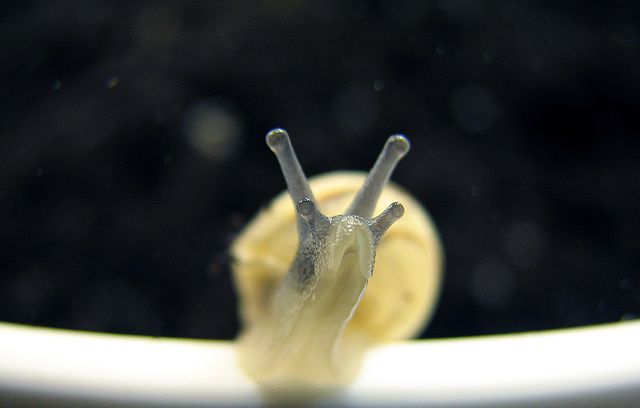Evolution of the eye
origins and diversification of the organs of sight through geologic time From Wikipedia, the free encyclopedia
Remove ads
The evolution of the eye is an example of a homologous organ which many animals have.





Some components of the eye, such as the light-sensitive opsins, seem to have a common ancestry. They evolved once, early in the evolution of animals. They control the conversion of photons into electrical signals. For example, an opsin found in the mammalian retina, melanopsin, is involved in circadian rhythms and pupillary reflex but not in vision.
On the other hand, complex image-forming eyes evolved some 50 to 100 times – using many of the same proteins and genetic toolkits in their construction.[1][2][3]
Complex eyes seem to have first evolved in a few million years, in the rapid burst of evolution known as the Cambrian explosion. There is no evidence of eyes before the Cambrian, but many eyes can be seen in fossils from the Middle Cambrian Burgess Shale.
Eyes show many adaptations to meet the needs of the organisms which have them. Eyes vary in their acuity (accuracy of sight), their sensitivity in low light levels, and their ability to detect motion or identify objects. Their sensitivity to wavelengths decides whether they can see in colours, and which colours they can see.
Remove ads
Rate of evolution
The first fossils of eyes appeared during the lower Cambrian period, about 540 million years ago.[4] This period saw a burst of apparently rapid evolution, dubbed the 'Cambrian explosion'. The evolution of eyes perhaps started an arms race that led to a rapid spate of evolution.[5]
Earlier than this, organisms may have used light sensitivity, but not for fast movement and navigation by vision.
It is difficult to estimate the rate of eye evolution. Simple modelling supposes small mutations exposed to natural selection. This shows that a primitive optical sense organ based on good photopigments could evolve into a complex human-like eye in about 400,000 years.[6]
Remove ads
Early stages of eye evolution

The earliest light sensors were eyespots. They are photoreceptor proteins found in protists. Eyespots can only distinguish light from dark. This is enough for the daily synchronization of circadian rhythms. They cannot distinguish shapes, nor decide from which direction the light is coming.
Eyespots are found in nearly all major animal groups. The Euglena's eyespot, called a stigma, is at the front. Its red pigment shades a collection of light sensitive crystals. Together with the leading flagellum, the eyespot allows the organism to move in response to light to do photosynthesis,[7] and to predict day and night. These movements are the main circadian (daily) rhythms.
There are visual pigments in the brains of more complex organisms. They are thought to help synchronise spawning with lunar cycles. By detecting the subtle changes in night-time illumination, organisms can synchronise the release of sperm and eggs to maximise the fertilisation of their eggs.
Vision itself relies on the basic biochemistry which is common to all eyes. How this biochemical toolkit is used to interpret an organism's environment varies widely. Eyes have a wide range of structures and forms. All of these have evolved much later than the underlying proteins and molecules.[7]
At a cellular level, there appear to be two main "designs" of eyes, one possessed by the protostomes (molluscs, annelid worms and arthropods), the other by the deuterostomes (chordates and echinoderms).[7]
Remove ads
PAX6
PAX6 is the protein which is encoded by the PAX6 gene.[8]
PAX6 is a master control gene or "transcription factor" for the development of eyes and other sensory organs. It is medically important because various mutations produce eyesight defects.[9]
Related pages
References
Other websites
Wikiwand - on
Seamless Wikipedia browsing. On steroids.
Remove ads
